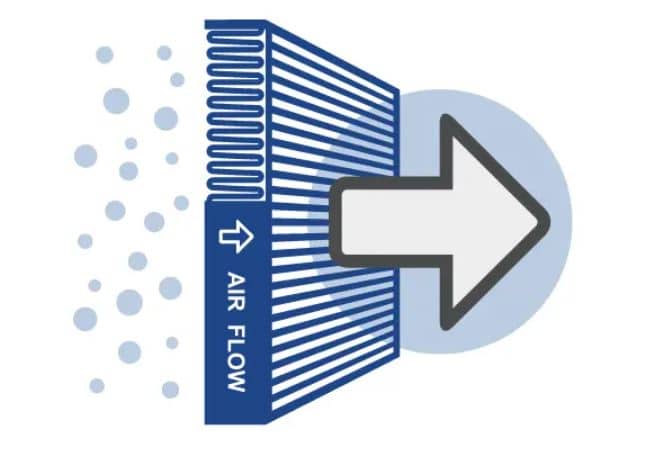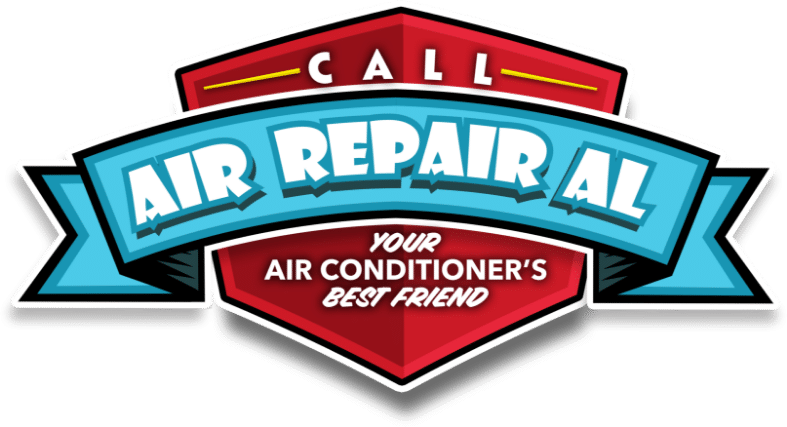
Should the Direction of Your Air Filter Arrow Be Up or Down?
It’s a simple task that many Greenville homeowners do regularly: changing your AC air filter.
You pick up a fresh, clean filter, slide out the old dusty one, and pop the new one in. Easy, right? Well, almost! There’s one small detail that can make a big difference: the direction of the airflow arrow.
Installing your air filter incorrectly, even just by reversing its direction, can surprisingly lead to poor cooling, airflow issues, reduce your system’s efficiency, and even cause costly damage.
Let’s clear up the confusion, explain why that little arrow matters so much, and help you keep your Greenville home comfortable and your HVAC system running smoothly.
The Mighty Air Filter: More Than Just a Dust Catcher
Before we talk about direction, let’s quickly recap why your air filter is so important:
- Protects Your HVAC System: Its primary job is to trap dust, dirt, pet dander, pollen, and other airborne particles before they enter your furnace or air handler. Without a filter, these contaminants would build up on sensitive components like the evaporator coil, significantly reducing efficiency and potentially causing breakdowns.
- Improves Indoor Air Quality: Beyond protecting your equipment, a clean filter also removes many allergens and pollutants from the air you breathe, contributing to a healthier indoor environment for your family in Greenville.
- Maintains Efficiency: A clean, correctly installed filter allows your HVAC system to “breathe” easily, ensuring optimal airflow and preventing your system from overworking.
The Arrow’s Secret: Understanding Airflow Direction
Every disposable HVAC air filter has an arrow printed on its frame. This isn’t just a decoration! This arrow is your crucial guide, indicating the direction of airflow through the filter.
The Golden Rule
The arrow on your air filter should always point TOWARDS your HVAC unit (specifically, towards the furnace, air handler, or blower motor). It points in the direction the air is flowing into the system.
Think of it this way: Your return air ducts suck air from your home into the HVAC system. The filter is placed in this pathway. So, the air flows from your living space, through the filter, and then into the furnace or air handler. The arrow shows this path.
Easy Ways to Remember:
- Arrow to the furnace/air handler: If your filter slot is right at the unit.
- Arrow into the wall/ceiling duct: If your filter is in a return air vent in a wall or ceiling.
- Arrow “away” from the return vent opening: Imagine the air being sucked into the vent; the arrow should follow that direction.
If you’re ever unsure, take a moment to look at the old filter before removing it, or check your HVAC system’s manual.
Why Does the Filter Direction Matter So Much?
While both sides of an air filter might look similar, they are designed with specific internal structures (like denser pleats or wire mesh reinforcement on one side) to efficiently trap particles when air flows in the intended direction.
Installing the filter backward can lead to several problems for your Greenville home:
- Restricted Airflow: The filter’s design might impede airflow more severely when installed backward. This forces your furnace or air handler to work much harder to pull air through the system.
- Decreased Efficiency & Higher Bills: When your HVAC system struggles due to restricted airflow, it consumes more energy to maintain your desired temperature. This translates directly into higher energy bills for you.
- Reduced Air Quality: A backward filter can be less effective at trapping dust, pollen, and other allergens, meaning more pollutants circulate through your home.
- Increased Wear and Tear: The extra strain on your HVAC system, especially the blower motor, can lead to premature wear and tear, increasing the risk of costly repairs or even shortening your system’s overall lifespan.
- Potential System Damage: In severe cases of restricted airflow, your system could overheat or even freeze up (in cooling mode), causing significant damage to components like the evaporator coil or compressor.
Beyond the Arrow: Other Air Filter Tips for Greenville Homeowners
- Choose the Right Size: Always use the exact size recommended by your HVAC system manufacturer. An improperly sized filter (too big or too small) will leave gaps, allowing unfiltered air to bypass the filter entirely.
- Select the Right MERV Rating: MERV (Minimum Efficiency Reporting Value) indicates how effectively a filter removes particles from the air. While higher MERV ratings filter more, they can also restrict airflow. For most residential systems in Greenville, a MERV rating between 8 and 13 offers a good balance of air quality and airflow. Consult a professional if you have specific allergy concerns or an older system.
- Change Regularly: This is the most common mistake! Check your filter monthly and replace it every 1-3 months. Homes with pets, children, smokers, or those suffering from allergies might need more frequent changes.
Still Puzzled by Your Filter? Let the Greenville HVAC Pros Ensure Your Airflow is Flawless!
That little arrow on your air filter is a mighty guide to ensuring your HVAC system runs efficiently, your energy bills stay manageable, and your Greenville home enjoys clean, healthy air. Taking a moment to install your air filter in the correct direction is a simple, DIY maintenance task that can prevent bigger, more expensive problems down the road.
If you’re ever unsure about your air filter, its direction, or need professional HVAC maintenance or repair for your Greenville, SC home, don’t hesitate to reach out to the trusted local HVAC experts at Air Repair AL.
Call 864-777-1111 to schedule service or contact us online with any additional questions.

